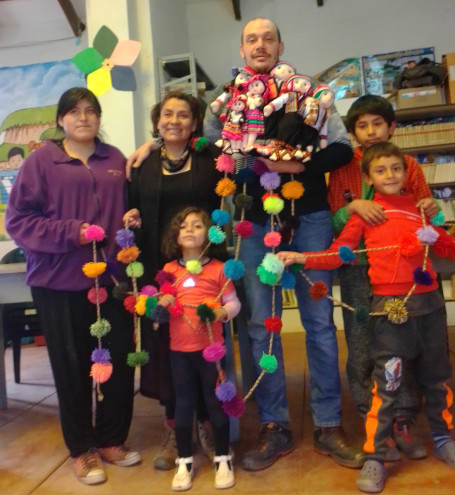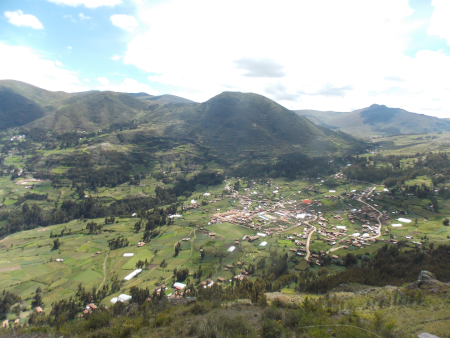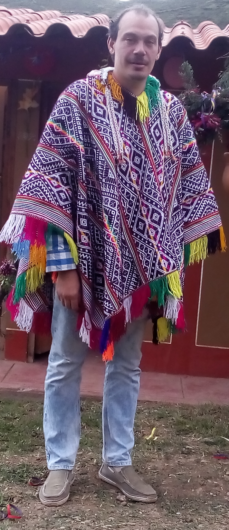Community Living

Written by Jonathan Roche and originally published in the Quart Monde journal (n° 263). Jonathan Roche is an ATD Fourth World Volunteer Corps member and the head of the photo archives at the Joseph Wresinski Archives and Research Centre.
Defining community
“There exists in Latin America a real and deep community life. There the community is an everyday reality. The villagers give their time for projects that are for the community. It’s a complete way of living together.
The community is a lived experience, a collective project for the benefit of everyone and bigger than one person. Working for free to serve the community is like paying off a debt. It is a way to pay our share, our cost, to show we belong.”
Joseph Wrésinski – Ligne de pensée et d’action, 1983
In this quote, Joseph Wresinki talks about living together. Based on my experience of living for four years in the Cuyo Grande community in rural Peru, I agree with him. There, I experienced what Joseph Wresinski describes in a few lines. I witnessed this community life and partook in it with my family.

Community life is not a one-time event. Rather, it is our life which is intertwined with that of others. We build our future together. I’d like to stress that it’s ‘our’ future and not ‘their’ future since this is a shared experience. Our contribution is not measured through time, but through what we give to others and our openness to community life.
Community belonging
In Cuyo Grande, I worked with the community on construction projects for the village. During the refurbishment of the football stadium, a compañero (friend), Alfonso, approached me with a worried look on his face. We had lived in the village for three years and were planning to go back to France. Alfonso thought that we were leaving for good, but I explained to him that we would only be away for the duration of our holiday.
Alfonso looked relieved and told me:
“We all really like you here because you’re one of us, you share everything with us, you do as we do.”
Joseph Wresinski often wrote about volunteering for the community and belonging to a community. I wasn’t born in Cuyo Grande. I only lived there for a few years. Nonetheless, I felt at home there, as if I’d always lived there. I felt comfortable and I felt that my family thought the same.
Our children went to school in Cuyo Grande. We went to the same healthcare centres as the village residents, we cared about the same issues as the other villagers: a better education for our children, improved roads, a nicer football stadium, the construction of a new church, or a more inviting local market square. Through this experience, I realised that community life took me beyond my own beliefs.
‘I’m here for my village’
In Cuyo Grande there are several religions. The main two are Catholicism and Evangelicalism. Even if sometimes people differ in their opinions and spiritual beliefs, what struck me was that belonging to the village brings people together and calms them.

I was elected to be a Varayoq in 2017. Historically, the Varayoq is the head of the village (like a mayor). It is a big responsibility. The Varayoq forms a team of five members: the Varayoq, a second in command and three officers (the mayor’s wardens otherwise known as the Regidor). Nowadays, the Varayoq team embodies the traditions of former villages, deeply rooted in Catholicism. The community asked me and three other villagers to represent Cuyo Grande in the town of Pisac. Consequently, we joined 11 other villages with their representatives. It made me wonder about my presence there. After all, I’m a foreigner and not religious. Going to church every Sunday was a challenge for me. Several Sundays later, I noticed that I wasn’t the only one not doing the sign of the cross in this Catholic church.
I approached one of the Varayoqs from the village of Wender and asked him the following:
- ‘Why don’t you do the sign of the cross like everyone else?’
He responded: ‘I am an Evangelist and not a Catholic.’
Then, I asked him: ‘Is it not too difficult for you?’
‘I’m here for my community, it needs me. I’m here for it.’ he replied.
Parallels
I learned a lot that day about what it means to belong to a community. When I read what Joseph Wresinski said above, I can’t help but draw a parallel between this experience and people in poverty in my country of origin, France. How do these people fit into community life?
“In Latin America it is written that human rights are community rights and not individual rights as they are in Europe. This is why we must absolutely learn to be silent, listen, and write the history of the people we are close to. As we have learned from people in poverty themselves so as to understand them and to then act with our minds and hearts. Always looking at people’s faces and hands should be one of our guidelines, because they teach us much more than words.”
Joseph Wresinski – La ou nous vivons, éditions Quart Monde, page 16
This statement is completely true. I think that this is still the case today in Europe: the approach of countries which favour individual rights is fundamentally different to that of countries which favour community rights. Joseph Wresinski’s statement has been transformative and inspiring in my own journey. It highlights that it is not those living in poverty who exclude themselves, nor their neighbours who exclude them.
Indeed, what engenders poverty and consequently excludes is the theory and idea of individual rights itself: the belief that humans can be free without relying on others.
I can now fully appreciate what Wresinki means when he states that our society’s recognition of the rights of those in deepest poverty must be non-negotiable — or, to use his own term — ‘undeniable’.

